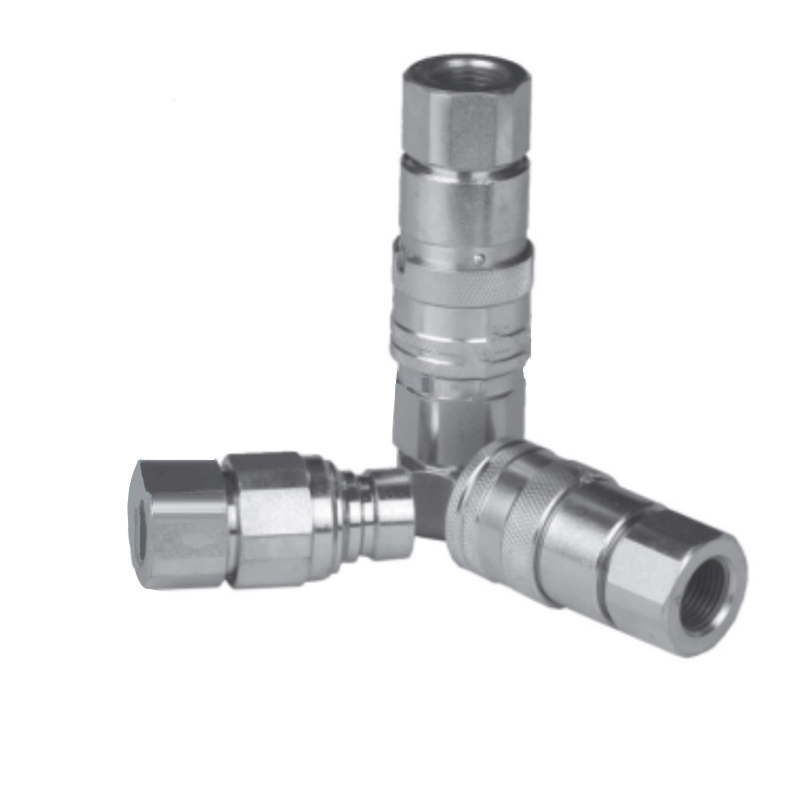How to properly clean and maintain a flat face hydraulic couplers to prevent contamination and ensure optimal performance?
Proper cleaning and maintenance of flat face hydraulic couplers are crucial to prevent contamination and ensure optimal performance. Here's a step-by-step guide:
Inspect for Contamination: Equip maintenance personnel with high-intensity lighting, magnifying devices, and inspection checklists to ensure meticulous scrutiny of every surface and component of the flat face hydraulic couplers. Encourage a methodical approach, starting from the exterior and gradually progressing to internal components. Look out for a wide range of potential contaminants, including dirt, dust, moisture, metal shavings, and hydraulic fluid residue. Use specialized inspection tools such as borescopes or endoscopes to access confined spaces and hidden areas within the couplers.
Use Compressed Air or Soft Brush: When removing loose contaminants from the external surfaces of the flat face hydraulic couplers, exercise precision and caution to avoid causing inadvertent damage. Equip maintenance personnel with regulated compressed air sources and appropriately sized nozzles to deliver controlled bursts of air capable of dislodging debris without generating excessive force. Similarly, provide soft-bristled brushes specifically designed for delicate cleaning tasks, ensuring that bristle stiffness and length are suitable for the material composition of the couplers. Encourage a gentle yet thorough cleaning approach, emphasizing the importance of patience and attention to detail.
Flush with Clean Hydraulic Fluid: Flushing the flat face hydraulic couplers with clean hydraulic fluid is a critical step in purging residual contaminants and maintaining optimal cleanliness. Prioritize the use of high-quality hydraulic fluid that meets or exceeds manufacturer specifications for compatibility and performance. Establish a standardized flushing procedure that incorporates precise volume measurements and controlled flow rates to ensure thorough coverage of all internal surfaces within the couplers. Utilize specialized flushing equipment such as flushing rigs or circulation systems to achieve optimal results. Implement stringent contamination control measures throughout the flushing process, including the use of filtered fluid and sealed containment systems to prevent recontamination.
Inspect Seals and O-Rings: Seals and O-rings play a pivotal role in ensuring the integrity of the hydraulic system by preventing fluid leakage and contamination ingress. To conduct a comprehensive inspection of these critical components, employ a combination of visual examination, tactile assessment, and precision measuring techniques. Utilize magnification devices and calibrated instruments to detect even subtle signs of wear, degradation, or dimensional irregularities. Pay particular attention to common failure points such as seal edges, sealing surfaces, and O-ring contact areas. If feasible, perform non-destructive testing methods such as dye penetrant inspection or ultrasonic testing to identify hidden defects and vulnerabilities. Document all inspection findings meticulously, categorizing them based on severity and prioritizing corrective actions accordingly.
Lubricate Moving Parts: Proper lubrication is essential for optimizing the performance and longevity of moving parts within the flat face hydraulic couplers. Select lubricants specifically formulated for hydraulic applications, taking into account factors such as viscosity, temperature range, and compatibility with sealing materials. Implement precision lubrication techniques to ensure uniform coverage of critical components while minimizing excess lubricant buildup. Utilize specialized lubrication equipment such as precision applicators, grease guns, or automated lubrication systems to achieve consistent results. Monitor lubricant consumption and component wear rates to fine-tune lubrication intervals and quantities over time.
GT-FF Flat face type hydraulic quick coupling













Contact Us